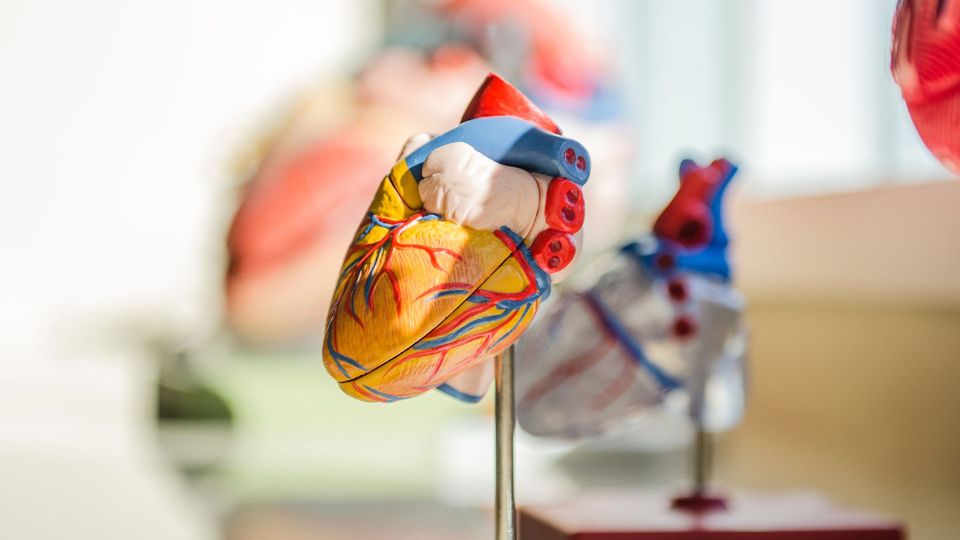How the Heart Develops Its Complex Structure
Researchers have examined the early stages of heart development, showing how complex meshes of muscle form.

Credit: Jesse Orrico/ Unsplash
Want to listen to this article for FREE?
Complete the form below to unlock access to ALL audio articles.
Read time: 3 minutes
The heartbeat is synonymous with life. It’s one of the of the first essential functions to begin during development and to end at death.
“The heart is one of the first organs to form and function during development,” explains Rashmi Priya, head of the Crick’s Organ Morphodynamics Lab. “As the embryo grows, the heart continues to develop, expanding from a simple tube-like structure to a complex 3D pump."
In new research published in Developmental Cell today, scientists in Rashmi’s lab have examined a specific stage of this development – the growth of muscular ridges called trabeculae.
As study lead and postdoctoral fellow in the lab, Toby Andrews describes, “during early development, the inner surface of the heart forms a complex meshwork of these trabeculae. These structures must form in the right amount to ensure proper heart function. Defects in trabeculae formation are associated with several heart diseases called cardiomyopathies.”
Their work has revealed that the formation of trabeculae is driven by feedback between heartbeats and cell shape changes.
To see the heart develop in real time, the team turned to the Crick’s aquatic facility, home to the zebrafish that are used to study early development.
”Zebrafish hearts are very similar to ours in terms of structure and function, but their small size and transparency means we can use live imaging to watch developmental processes unfolding in real time as the heart beats inside the embryo - in this case, how the movements and shape changes of single cells build a functional organ,” explains Toby.
Using powerful microscopes and genetic tools, they discovered that trabecular ridges grow not by cell division, as previously thought, but by moving and rearranging the cells already in place.
They also found that the heart grows by stretching its existing cells, almost doubling in size, allowing the heart to expand its volume by 90% and maximise its blood filling capacity.
Setting the right pace
Using computational models, the team uncovered a feedback system where the heartbeat and chemical signals work together to control the density of these trabecular ridges, making sure the heart develops in just the right way to function properly.
As the trabeculae develop and the heart contracts more strongly, this initiates mechanical signal that makes cells ‘softer’ enabling them to stretch and increase their size. This feedback system dictates a healthy pace of growth, because as heart cells stretch, they lose their ability to get recruited, stabilising trabecular growth.
Rashmi describes this system as “self-organising and intelligent”, where the heart regulates its own development at the right time, to meet the body’s physiological demands.
“The structure of the heart doesn’t stop changing at birth and continues to remodel over a lifetime” adds Toby. “Our hearts adapt their form and function to different physiological challenges, and a better understanding of the biology underpinning this flexibility could form the basis of future treatments for heart disease.”
This work, funded by the British Heart Foundation, could help connect developmental defects to the underlying biology of cardiomyopathies, as Rashmi explains. “Even though we have come a long way in understanding the molecular pathways underlying cardiomyopathies, we still lack a clear picture of how trabeculae are shaped and how disruptions in trabecular architecture affect heart function. That’s why it’s crucial to uncover the core developmental programs that shape these ridges to enable the heart to function and support life.”
Reference: Andrews TGR, Cornwall-Scoones J, Ramel MC, Gupta K, Briscoe J, Priya R. Mechanochemical coupling of cell shape and organ function optimizes heart size and contractile efficiency in zebrafish. Developmental Cell. 2025. doi: 10.1016/j.devcel.2025.07.011
This article has been republished from the following materials. Note: material may have been edited for length and content. For further information, please contact the cited source. Our press release publishing policy can be accessed here.

